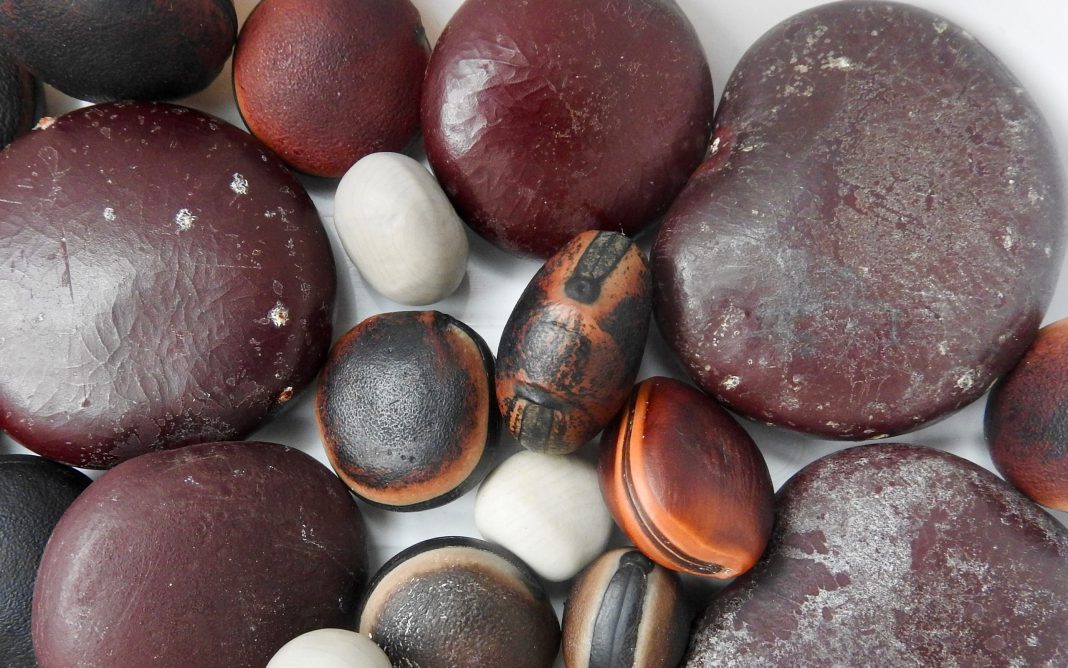A young person’s report to impart something new he learned when he joined a talk given on March 12, 2022 by the charity Strandliners to the friends of Rye Harbour Nature Reserve – SEA BEANS! Xavier Marrs is a ten year old who enjoys sciences and nature, finding fossils, crystals and geodes.
Sea beans are – you guessed it, beans. But many people regard them as treasures. Not the sort of gold, silver and diamonds treasure, no – rather a sort of ‘keepsake’. There are many types of sea beans, for example Large Sea Heart Beans, Horse Eye Beans and Hamburger Beans.
 For hundreds of years they have been seen as symbols of good luck, longevity, endurance and fertility. If you are lucky, you may be able to find sea beans on our local beaches, however, they are quite rare and hard to see because they are the size, shape and colour of pebbles. Perhaps because this, only three had been recorded in our local beaches in hundreds of years according to the official records, although Andy has never found more than this in recent years. In December 2004, Andy first came across a sea bean, not knowing what it was. The strand line (the high-tide line) is often formed of seaweed, driftwood, netting and general litter, some of which has travelled on global currents across the ocean.
For hundreds of years they have been seen as symbols of good luck, longevity, endurance and fertility. If you are lucky, you may be able to find sea beans on our local beaches, however, they are quite rare and hard to see because they are the size, shape and colour of pebbles. Perhaps because this, only three had been recorded in our local beaches in hundreds of years according to the official records, although Andy has never found more than this in recent years. In December 2004, Andy first came across a sea bean, not knowing what it was. The strand line (the high-tide line) is often formed of seaweed, driftwood, netting and general litter, some of which has travelled on global currents across the ocean.
Sea beans can float in the water for decades, and there is research going on, right now, to see just how long they last before they decompose in water. The casing of the sea bean is hard and resilient and Andy says that it can only be opened by using a hacksaw. We don’t yet know how they germinate in the soil; we wonder whether it may be due to the actions of fungi. In the UK most sea beans have been found on the beaches of the west coast of Ireland, the Outer Hebrides and Cornwall. The plant has evolved to spread it’s seeds very far into the tropics, but would not survive here, although it is grown by experts at Kew Gardens.
Xavier adds “My favourite things to do is drawing birds as I see them on Rye Nature Reserve.”
For more information about beans, cleaner rivers and cleaner seas please go to: strandliners.org or email strandlinerscic@gmail.com.
Image Credits: Andy Dinsdale , Xavier''s grandparents .




Very interesting and informative
Well done xavier, a great article and a journalist in the making! Can yoiu write some more articles please?
A fascinating article and beautifully written; it was easy to understand and of interest to every age group.
Agree – more please! I certainly now know a lot more about these treasures.
Was good to know it better. I collect them and decided to research about them, thanks- Entaada rheedei, collector outta Kenya – blessed
Just found one on Hells Mouth in North Wales
Used to find these occasionally on the NW coast of Ireland; especially when I was a kid 50+ years ago. Still on a look out every time I visit.
Local Irish tradition that you carried one in your pocket or mounted them on a necklace to ward off joint pain